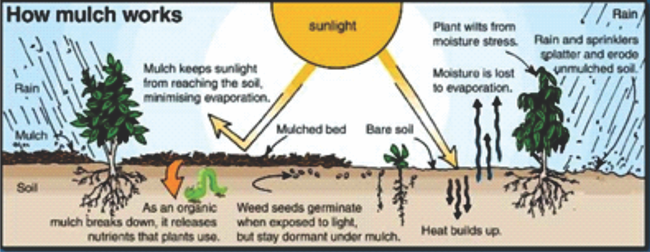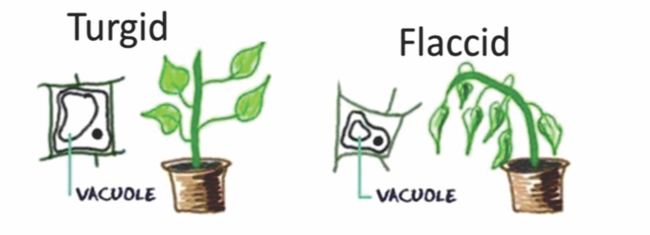by Mel Kendall
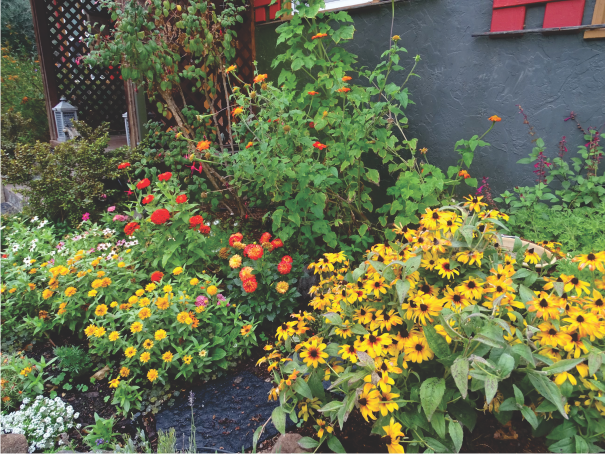
A pollinator garden's diverse plants and colorful blooms attract and help to support a variety of birds, butterflies, moths, and beneficial insects year-round. These visitors play a critical role in sustaining our ecosystem by helping our plants reproduce. Pollinator gardens provide the habitat, plants, pollen, and nectar to help us care for our wildlife partners. Transfer of pollen is the plant's goal, and nectar and pollen are the pollinator's reward. If plants bloom earlier due to climate change, and species respond to seasonal changes in light, the food supply may not be available when the migrating species pass through. A pollinator garden can provide the habitat and food migrating pollinators need and give the gardener personal satisfaction in the process.
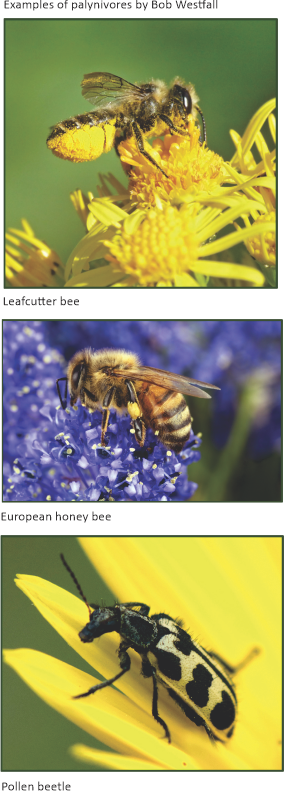
Install plants that will attract pollinators.
• Lots of color will attract birds, bees, butterflies and other pollinators: Different pollinators see and are attracted to different colors. Create an overall ‘crazy quilt' color scheme rather than a monotone one.
• Have enough mass of each plant type. Provide “one stop shopping” by grouping the same color/type of plants in large clumps
• Have a variety of plants. Mix it up. Plant multiple varieties of pollinator friendly plants in your garden. Planning for a longer nectar and pollen season when selecting plants can help encourage early arrivals and latecomers.
Create a Habitat
All creatures (including us) have the four same basic needs in order to thrive. To entice and support any wildlife in our gardens, we need to provide food, water, shelter, and a place to rear and nurture young. We need to do it in a way that supports the entire ecosystem, which means avoiding toxic chemicals.
Food
• Plan for the whole life cycle of the pollinator. The pollinator will need food and shelter to grow become adults and provide safe places to breed and raise their young.
• Variety of plant species and bloom times. Some pollinators arrive in early spring, others are just passing through and still others stay for throughout the growing season. Plan for each of these scenarios when selecting plants for your pollinator garden.
• Long duration and sequence of bloom. Some pollinators are specialized. Make sure to have plants that bloom early and have a rotating sequence of blooms to feed specialized pollinators.
• Different shapes of bloom for different pollinators. Some pollinators can reach down into a trumpet shaped bloom to get the pollen and others are perchers that will just alight on a bloom to gather the pollen. Provide for both.
• Plant in 3-4 foot blocks for visibility and access. Some pollinators can only see certain colors and/or are attracted to certain plants so plant similar colored plants in blocks to facilitate the collections of pollen.
• High quality pollen and nectar. Some plants provide pollen but not as nutritious or as plentiful that provided by other plants. Plant as many types as possible that provide the best/most plentiful pollen.
• Plant in color (pollinators see color differently!) Find out which pollinators see what color(s) and choose and locate your plants with that in mind.
Rewards and Payback
Nectar provides the sugars, amino acids and carbohydrates for adult pollinators. As they make their rounds throughout the garden to seek their reward of the nectar, the pollinators are dusted with pollen which they casually disburse thus pollinating or paying back the plants for the ‘reward' that they provided.
Pollen provides protein, fats/lipids, starch, vitamins, and minerals to create the bee loaf that feeds larval bees. Also, numerous species of insects (bees, wasps, ants, beetles, flies, butterflies, moths), mites, spiders, and birds consume pollen as a food source. To more efficiently collect pollen, these palynivores have evolved various adaptations in their body parts and behavior. Pollinators like hummingbirds distribute pollen more casually as it collects on beak and head feathers.
Water Many birds prefer running water, but that is a challenge for delicate pollinators. Butterflies and bees can't swim and need shallow water or wet gravel or mud so they can stand and sip, a process called puddling. They draw nutrients from water and benefit from water that we would consider dirty. From studies by Butler and by Bonoan, “during much of the year they found that bees had a strong preference for sodium-rich water, regardless of plant diet. In the fall, however, when pollen is scarce, they showed a preference for water sources containing calcium, magnesium, and potassium, all of which are found in pollen. This demonstrated that honey bees have the ability to switch water sources to compensate for dietary nutrient deficiencies.” So, in your water basin, leave a few leaves, some gravel, and a stick for perching. And maybe a bit of salt or ash for mineral content. Wet gravel or mud is great.
Shelter Some pollinators will need places to feel safe and sheltered either temporarily or long term. Leave some brush, dead wood, or unpruned shrubbery or grasses for shelter and overwintering. Leave some dead blooms for seed and to provide shelter through the winter for pollinators. Wait to cut back perennials and shrubs until early spring when the air begins to warm and creatures begin to stir. Add structures to encourage certain pollinators. If you are a neat gardener, designate places in your yard to be just a little messy and learn to tolerate just a little chaos in your garden. A little tolerance makes us better neighbors.
A place to raise young All creatures need a safe place for their young. To provide safe places, create undisturbed hiding places, provide nesting materials and pieces of dead wood for holes and habitat. Many native bees and other insects use mud for nesting material and need access to bare ground (slightly damp if possible, otherwise they have to dig for it). Artificial nesting sites must suit individual pollinators and they must be kept clean or they risk mold and disease.
Sustainability What exactly does ‘sustainability' mean? According to Google & Oxford Language: ‘the ability to be maintained at a certain rate or level'; ‘Avoidance of the depletion of natural resources in order to maintain an ecological balance.' How can we do this in our gardens? Avoid using toxic chemicals in your garden, use the Integrated Pest Management Method instead. No-till gardening practices keep carbon and nutrients sequestered in the soil and ground nesting pollinators undisturbed. Use patience and tolerance, rather than over-grooming your garden. Capture water run-off and let it sink into the ground to boost groundwater and purify it of pollutants from roofs and hard surfaces. Use compost to keep the life in your soil strong, which will keep your plants and their visitors strong in turn. Consider the whole system as a community or even an organism.
Support entire life cycle Many pollinator species have adapted to use specific plants for food and protection. Provide plants with high quality nectar to attract and support adults, and their larvae. This is where tolerance comes in. Larvae eat a lot, leaving chewed plants and frass behind. If this interests you, plant where you can watch the action. If it is less tidy than you like, plant larval food plants in a back corner of the garden.
Information link: American Farm Bureau Foundation for Agriculture
UC Davis-plight of the pollinators
by Melody Kendall
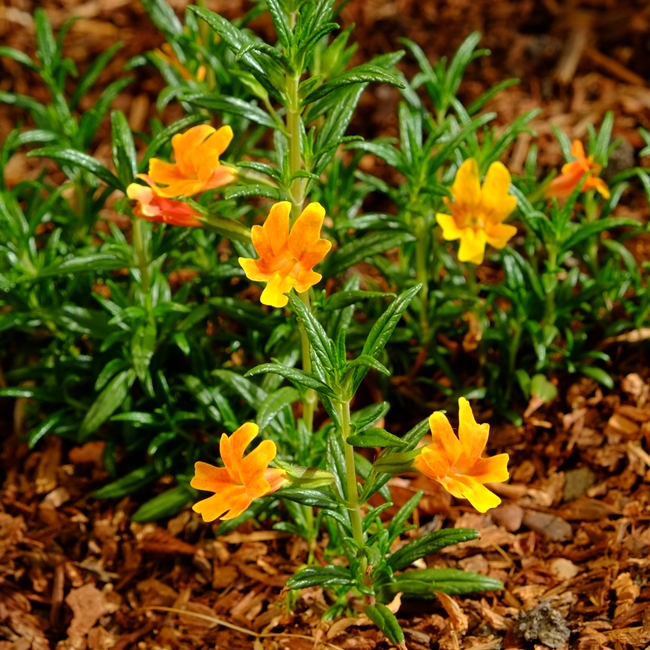
Why plant California Natives in your landscape? The reasons are many:
- To encourage native insect populations that are on the decline. We need these native insects to perform duties such as pollination, decomposing plant materials and supporting the food chain. Studies have generally shown that these native insects are probably attracted to native plants because they have evolved together. When native insect populations stay in an area they multiply and continue to benefit the overall welfare of the garden and environment.
- Native plants provide habitats. Birds, butterflies and other pollinators need places to live and raise their young. Native plants provide compatible places for them.
- Conserving water. Most, but not all, native plants are, once established, drought-tolerant and/or have very low water requirements. With the current drought here in California native plants become more relevant in considering all aspects of landscape management.
- Fewer pest problems. For the most part, native plants have fewer pest problems than nonnatives, and can be stronger and healthier because of their evolved adaptation to our climate.
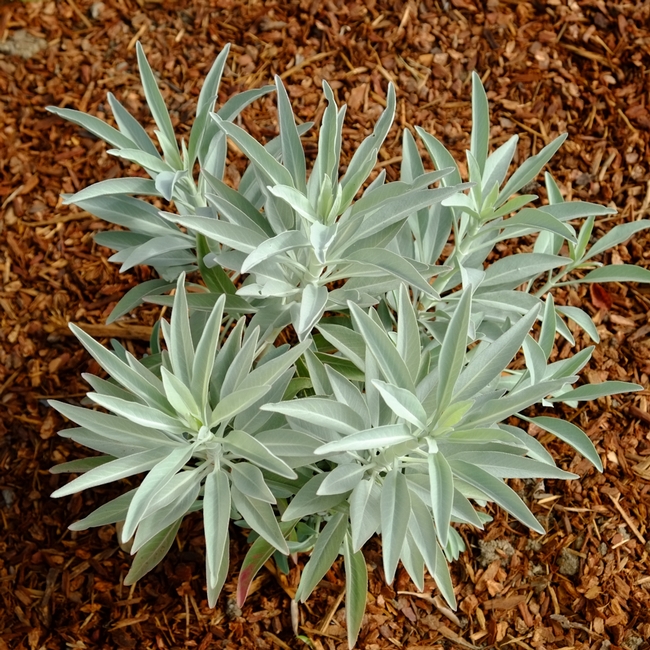
- The California Native Plant Society (CNPS) has a wonderful tool to help you in your search. See CNPS plant search tool With this tool you can narrow down your options. You can even type in your address to get a list of suggested plants for your exact area.
- The UC Berkeley Urban Bee Lab has a list of best bee plants for California See best bee plants for California
- The UC Master Gardeners of Santa Clara County have created a list of native plants that attract pest-eating insects
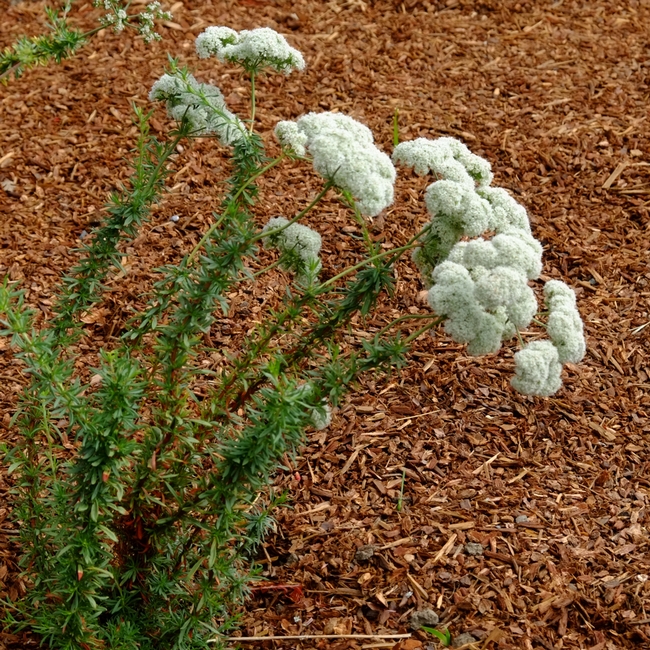
In a future post we will look at the Las Flores Learning Garden Pollinator Garden and the benefits of creating one of your own.
Napa Master Gardeners are available to answer garden questions by email: mastergardeners@countyofnapa.org. or phone at 707-253-4143. Volunteers will get back to you after they research answers to your questions.
Visit our website: napamg.ucanr.edu to find answers to all of your horticultural questions.
Photo credits: Joan Harris
Margaret Legg
As we all know rainfall this year has been extremely low. According to UCCE the rainfall total for this calendar year in the Carneros and Oakville region is recorded as 4.51 inches. If one considers the “rainy” season from October 2021 to the present the total would be 20.86 inches, it's still quite below our average annual rainfall of 26-28 inches as referenced by City of Napa Utilities/Water Division. We all have a responsibility to do what we can to conserve this precious commodity and analyze our usage. Give cold tap water that would otherwise go down the drain a second chance and water something outside. Every drop counts.
Compost & Mulch…the secret sauce to reducing your water usage in your garden.
|
Mulch |
Mulch |
Mulch |
Mulch |
No Mulch |
No Mulch |
|
As organic mulch breaks down, nutrients are released into the soil. |
Mulch keeps sunlight out, minimizing evaporation. This helps retain water and keep moisture at the roots. |
Without sun weed seeds are suppressed |
Mulch insulates plant roots, protecting them from temperature fluctuations. |
Without mulch heat builds up in the soil and moisture is lost to evaporation. |
Without mulch, rain, and wind cause soil to erode. |
The benefits of compost and mulching:
- Insulates the soil
- Reduces weed seed germination
- Can save 20-30 gallons of water/1000 sq ft each time you water.
- Reduces waste that ends up in landfill
- Amends and improves soil health
- So many more benefits…win-win!
There are multiple options when it comes to compost methods and mulch choices. See references below regarding composting methods including vermicomposting (worm castings). One of the best options for compost to purchase is our own state of the art Napa Recycling Facility.
Watering
Shrink the lawn
- Lawns offer the greatest potential for water conservation. Consider lawn alternatives; reduce your water schedule; water between 3am-8am; explore water reducing sprinkler heads
- Explore the City of Napa's Cash for Grass program (see reference)
- Control weeds. Weeds complete with desired plants for water and nutrients
- Group plants with similar exposure and water needs. Look for native or drought tolerant plants.
- Water deeply, infrequently, efficiently, and always use a timing device.
Watering systems/application options
- Hose and sprinkler: typical garden hose uses 9-17/gal/min. depending on water pressure. I filled a 5 gal. bucket in 25 seconds at 80 psi. A water saving hose nozzle can reduce that usage to 2.5/gal/min.
- Pop-up sprinklers: average use is 4/gal/min/sprinkler. There are dozens of different types using varying amounts of water, and some frequently have overspray and run-off.
- Soaker hose: uses 1/gal/ft/hr.
Drip irrigation Tubing:
- Some common size tubing options are: 1/4”, 1/2”, 5/8” plain tubing
- Pressure compensating emitter tubing: 1/2” with emitters every 12” or 18” uses 0.8-1.0 gph/emitter (depends on the brand)
- Pressure compensating emitter tubing: 1/4” with emitters every 6” or 12” uses 0.5 gph/ft
Emitters:
- Applies water directly where it is placed; eliminates overspray and runs off.
- Drip emitters allow water to drip or seep into the root zone; micro sprayers direct water into the air like a miniature sprinkler head. Both have barbed ends that push into tubing or in the ends of micro tubing. Inline emitters fit between lengths of micro tubing and create custom systems.
- Output rates for emitters range from 1/2-2 gal/hr. and can compensate for plants with diverse watering needs that are run on the same tubing line.
With this unprecedented time of extreme heat and limited amount of water it seems clear that composting and mulching your garden, along with drip irrigation are clear winners for keeping our gardens alive and the soil healthy.
On a final note, during the rainy season (fingers crossed) there are multiple options to save some of that precious liquid. Roof runoff offers tremendous amounts of water that can be put to better use than rushing down the street to be deposited in the storm drain, only to end up in our streams and eventually the ocean, carrying with it pollutants from cars, pesticides, garbage, construction refuge, cigarette butts, and the list goes on.
There are many water saving measures that can be created from simple to complicated:
- Rain barrels/tanks/cisterns
- Graywater catchment
- Underground reservoirs
- Rain Gardens
Napa Master Gardeners are available to answer garden questions by email: mastergardeners@countyofnapa.org. or phone at 707-253-4143. Volunteers will get back to you after they research answers to your questions.
Visit our website: napamg.ucanr.edu to find answers to all of your horticultural questions.
Photo credits: Wild Valley Farms with permission
Information Links:
City of Napa-Cash for Grass info https://www.cityofnapa.org/585/Cash-For-Grass
Napa County Rainwater harvesting https://www.napawatersheds.org/managed_files/Document/5748/rain%20harv_updated_2013.pdf
Recycling center https://naparecycling.com/residents/napa-recycling-facility/
Carneros rainwater measurement station https://cenapa.ucanr.edu/about/weather/?weather=station&station=109
UCMG Napa County-Composting information https://napamg.ucanr.edu/Master_Gardener_Programs/Composting/
by Carole Kent
The power of caring and acting, and I emphasize EVERY action to care for the Earth (capital E) and earth (small e) is necessary and important. Greta Thunberg, the young climate activist from Sweden puts it this way, "no one is too small to make a difference".
Climate change is obvious and it affects everything. We can all work to stop and reverse this damage, and it all begins with soil. We can cultivate an attitude of caring and relationship with soils as we understand more about the life of the soil.
Healthy soil is teeming with life: approximately 8 billion microorganisms live in 1 tsp. of soil. Healthy soil has highly complex and organized relationships where everything is connected. Carbon is essential to all life and carbon use and sequestration is out of balance. By improving the health of our soil we help correct the imbalance, at the same time strengthening plant's ability to withstand increasing heat. Plants draw down and sequester carbon, carbon helps feed the microbial life in the soil which helps feed the plant, a true win (slowing climate change), win (feeding the microbes), win (feeding the plant).
There are many ways to increase soil health with innumerable benefits:
- Increase soil organic matter: All types of soil benefit:sand, clay & silt, because organic matter increases water retention,4" of compost can decrease water use by 40%, and compost attracts and feeds soil microorganisms.
- Keep soil covered: It can reduce soil temperatures dramatically, reduce evaporation, reduce weeds, reduce compaction and erosion.
- Practice judicious water use: Water in early morning and use drip irrigation, it reduces evaporation and places water next to roots
- Avoid chemical fertilizer and herbicides and pesticides: Chemicals kill the life in the soil, birds, bees, beneficial insects, leach into streams and lakes, contaminating water sources
- Maximize living roots, plant cover crops: Soil organisms need to be fed carbon, carbon comes from plants roots, roots enable carbon sequestration
- Increase plant diversity: Nature loves diversity, monocrops invite pests and disease. greater diversity above ground increases diversity below ground
- Minimize soil disturbance-no till: Disturbing the soil destroys the life in it and breaks up the soil food web, requiring rebuilding of fungal hyphae that link plants sharing water, nutrients and warnings of pest invasions. It breaks up aggregates and releases carbon into the atmosphere, allows water to evaporate and brings up weed seeds and creates hard pan
- Avoid soil compaction-don't walk on soil: It squeezes air out and soils have less ability to hold water, and thus can cause erosion
Our future depends on us taking action. Taking action depends on knowledge, caring and being aware that everything is connected. We are part of, not apart from this magnificent web of life. Deborah Koons Garcia, a documentary filmmaker says, "soil is one of the true miracles of the planet and we treat it like dirt."
Our calling is to change that.
Napa Master Gardeners are available to answer garden questions by email: mastergardeners@countyofnapa.org. or phone at 707-253-4143. Volunteers will get back to you after they research answers to your questions.
Visit our website: napamg.ucanr.edu to find answers to all of your horticultural questions.
Photo credits: Opensource image
Information links:
UC ANR Healthy Soils for California https://ucanr.edu/sites/soils/
Healthy Soil Basics https://ucanr.edu/sites/soils/Soils_101/
Tips to improve your garden soil https://ucanr.edu/sites/soils/Soils_for_Homes_-_Gardens/
Soils and Nutrients https://ucanr.edu/sites/Soils_and_Nutrients/
Cynthia Kerson
With the weather getting warmer by the year, it's time we recognize the difference between heat and water stresses in our plants. The temperature is averaging 83°, and according to www.GreenCastOnline.com, a service provided by a fertilizer company, soil temperatures have been averaging about 81° in Napa and 85° in Calistoga. Lately, these temperatures have been as high as 84° and 88°, respectively. This company wants to sell you lawn fertilizers, so their warning system is in place to alert when certain weeds or insects might appear because the soil of your lawn reaches the temperature they thrive in.
Most of the plants we grow in our gardens like the soil temperature to be between 65-75°. When the soil gets too hot, they mitigate the effect by wilting, bolting, getting sunburn and dropping leaves. What is the most common, knee-jerk, reaction to this? Water, water, water. However, hot soil and air temperatures don't always correlate with not enough water. In fact, too much water in the soil could contribute to the problem by suffocating the roots, so it's important to recognize the signs of heat stress and manage that. The first line of action is to mulch. I'm sure you've heard a Master Gardener or two assert the importance of mulching. Mulched soil (bark, hay, rocks [sometimes], and leaving leaves), are all forms of mulch. Unmulched soil generally follows the fluctuations of the air temperature and this is especially true in raised beds. Mulched soil tends to stay consistent throughout the daily cycle.
Another way to cool the soil, and hence the plant, is to provide shade cloth, which can cool the air by as much as 10°. In this case, since you are cooling, and not trying to protect from frost, leave the sides open so air can circulate but is cooler due to shade protection of the sun. This will also keep the humidity level constant.
How are heat and water stress different? The most common sign for both too much and not enough water is yellowing of leaves. Mottled leaves can also be a sign of either. The gardener needs to look beyond these symptoms to decide which it is. Overwatering may be expressed by droopy, floppy leaves that will become lighter green than the natural color of the plant's leaves, whereas under-watered plants wilt from the stem and may lose leaves.
When overwatered, the droopy stems occur because the plant loses turgidity. Turgidity is the pressure against the plant's cell walls from the amount of water within them, causing them to be erect, like a water balloon. Without enough water to support the shape of the cell, they'll flatten, or become flaccid, and when enough cells have lost shape, the stems wilt. This is the most obvious sign to determine whether the plant is under- as opposed to over-watered.
An overwatered plant may also shed leaves – but for a different reason: this is because the roots may be experiencing rot due to limited access to oxygen and nutrients in the soil. If you see this, obviously don't water more. Removing the plant and running the roots under water to clean them, removing severely damaged roots, and repotting or replanting is your best, albeit not guaranteed, way to resolve root rot.
A sign of an under-watered plant is leaf drop. Before they drop, though, their tips may brown, and they'll look dull and lack-luster. The plant will put more energy into survival and less into leaf and blossom development. If chronically under-watered, the leaves won't grow back. If intermittent, the leaves will cycle through starting and dying off. Obviously, the resolution is giving the plant water, but in doses. Don't flood the plant out of guilt. Water until you feel wet soil at about 2” depth and remain on whatever schedule works to maintain that level. Removing any blooms or imminent blooms will help the plant put its resources into preparation.
Knowing whether a plant is thirsty, drowning, or experiencing heat stroke is vital to its care. Recognize heat stress and resolve it by maintaining a healthy layer of mulch, covering with shade cloth, or possibly moving the plant to an area where the soil can remain cooler on hot days. If watering is the issue, respond with the appropriate measures discussed above. Hopefully your plant will come back and thrive.
Napa Master Gardeners are available to answer garden questions by email: mastergardeners@countyofnapa.org. or phone at 707-253-4143. Volunteers will get back to you after they research answers to your questions.
Visit our website: napamg.ucanr.edu to find answers to all of your horticultural questions.
Diagram: https://qsstudy.com/turgidity-definition-importance/
Reference: OSU extension-heat stress https://extension.oregonstate.edu/gardening/flowers-shrubs-trees/heat-wave-garden-how-identify-prevent-heat-stress-plants

